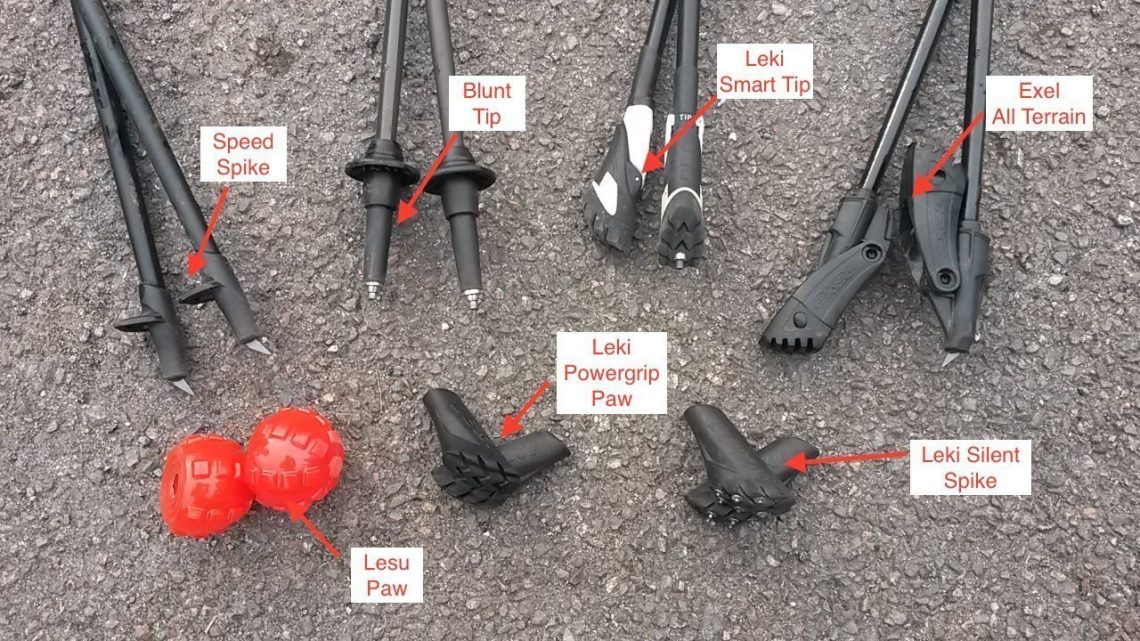Hiking poles are a fantastic tool for improving balance, reducing strain on your knees, and enhancing your overall hiking experience. But have you ever stopped to think about those little tips at the end? They’re not just there for show! Selecting the correct hiking pole tips can significantly impact your traction, the longevity of your poles, and even the environment. So, which hiking pole tips should you be using? Let’s dive in and explore the world of hiking pole tips, ensuring you’re equipped for any trail that comes your way.
Understanding Different Types of Hiking Pole Tips
There’s a whole world of hiking pole tips out there, each designed for specific terrains and purposes; From durable rubber tips to aggressive carbide tips, understanding the options is key to making the right choice. Let’s break down the most common types:
Rubber Hiking Pole Tips: Versatility and Protection
Rubber tips are your go-to for general use. They’re quiet, protect the trail, and provide decent grip on paved surfaces and smoother trails. Think of them as the all-season tires for your hiking poles.
- Pros: Quiet, non-damaging to trails, good for paved surfaces, affordable.
- Cons: Can wear down quickly on rough terrain, less grip on ice or loose surfaces.
Carbide Hiking Pole Tips: Grip and Durability
Carbide tips are the workhorses of the hiking world. These are exposed metal tips, often made of tungsten carbide, that offer superior grip on ice, rocks, and packed dirt. They’re built to last, even under heavy use.
- Pros: Excellent grip on various surfaces, very durable, ideal for challenging terrain.
- Cons: Can be noisy, may damage delicate trails, not suitable for indoor use.
Basket Hiking Pole Tips: Preventing Sinking
Baskets aren’t technically tips, but they attach near the tip and play a crucial role in preventing your poles from sinking into soft ground, snow, or mud. They come in different sizes for different conditions.
- Snow Baskets: Wider diameter for deep snow.
- Mud Baskets: Smaller diameter for muddy trails.
Tip: Always carry a spare set of tips, especially on longer hikes. You never know when you might need them!
Choosing the Right Hiking Pole Tips for Different Terrains
The best hiking pole tip for you depends heavily on the type of terrain you’ll be encountering. Are you planning a leisurely stroll on a paved path, or are you tackling a rugged mountain trail? Let’s match the tip to the terrain:
Hiking Pole Tips for Paved Surfaces
For paved surfaces, rubber tips are your best bet. They provide adequate grip and prevent the annoying “clack, clack, clack” sound that carbide tips make.
Hiking Pole Tips for Rocky Trails
Rocky trails demand the superior grip of carbide tips. They’ll bite into the rock, providing stability and preventing slips. Consider using smaller baskets to avoid getting them caught between rocks.
Hiking Pole Tips for Snowy or Muddy Conditions
When snow or mud is involved, baskets are essential. Use wider snow baskets for deep powder and smaller mud baskets for softer trails. You might even consider using carbide tips underneath for added grip.
Interesting Fact: Some hiking poles come with interchangeable tip systems, allowing you to switch between rubber and carbide tips quickly and easily.
Replacing Your Hiking Pole Tips: When and How?
Like any piece of gear, hiking pole tips wear down over time. Knowing when and how to replace them is crucial for maintaining performance and safety. So, when do you know it’s time for a change?
Signs Your Hiking Pole Tips Need Replacing - Worn Rubber: If your rubber tips are cracked, flattened, or significantly worn down, it’s time for a replacement.
- Dull Carbide: If your carbide tips are rounded or no longer provide adequate grip, they need to be sharpened or replaced.
- Loose Fit: If your tips are constantly falling off, the connection is likely worn, and you need new tips.
How to Replace Hiking Pole Tips
Replacing hiking pole tips is usually a simple process. Most tips are either screwed on or pushed on. Here’s a general guide:
- Remove the Old Tip: Unscrew or pull off the old tip. You might need pliers if it’s stuck.
- Clean the Pole: Clean any dirt or debris from the end of the pole.
- Attach the New Tip: Screw on or push on the new tip until it’s securely in place.
Frequently Asked Questions About Hiking Pole Tips Can I use rubber tips on all terrains? Rubber tips are versatile but not ideal for all terrains. They work well on paved surfaces and smoother trails but lack the grip needed for rocky or icy conditions. Are carbide tips bad for the environment? Carbide tips can potentially damage delicate trails, especially in areas with sensitive vegetation. Use them responsibly and consider rubber tips when appropriate. How long do hiking pole tips last? The lifespan of hiking pole tips depends on the terrain and frequency of use. Rubber tips typically wear down faster than carbide tips. Inspect your tips regularly and replace them when needed.
Choosing the right hiking pole tips might seem like a small detail, but it can make a big difference in your hiking experience. By understanding the different types of tips and matching them to the terrain, you can improve your traction, protect your poles, and enjoy your hikes even more. So, next time you’re gearing up for a hike, take a moment to consider your tips. Happy trails, and safe hiking! Remember to always leave no trace and respect the environment. Your adventures will be all the more rewarding.






